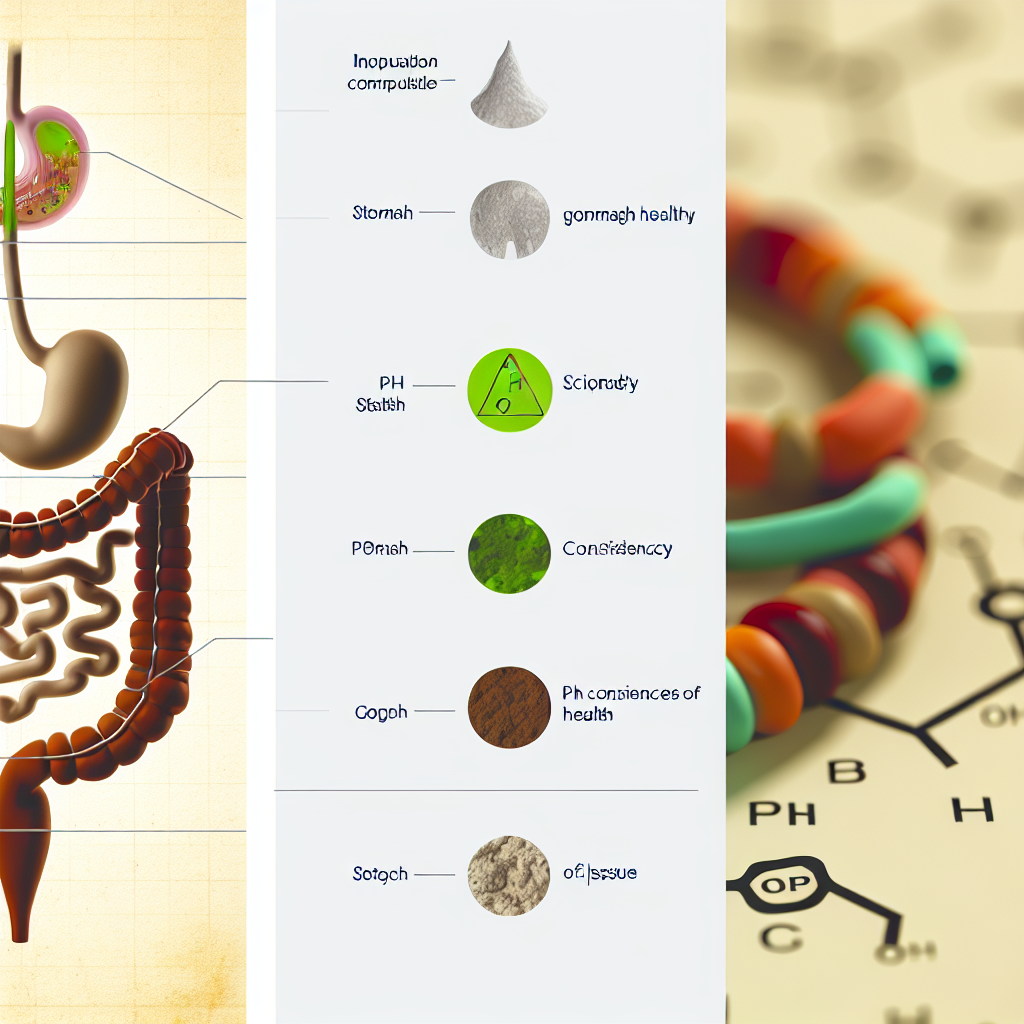# Understanding Gut Health Through Stool pH and Consistency
Why Gut Health Starts with What Ends Up in the Toilet
Gut health has become a major focus in holistic and integrative medicine in recent years—and for good reason. The gut, often referred to as our “second brain,” is more than just a digestive powerhouse. It houses trillions of bacteria that interact with our immune system, influence mood through the gut-brain axis, and even impact the development of chronic diseases.
While many people frequently monitor their diet, exercise, and sleep patterns for optimal health, an often overlooked but highly revealing indicator of gut health is the consistency and pH of stool.
Understanding the pH of stool can offer valuable insights into how well your digestive system is functioning and whether your gut microbiota is in balance. A healthy stool pH generally ranges between 6.5 to 7.5, indicating a comfortable equilibrium between acidic and alkaline environments suitable for beneficial bacteria. A deviation from this range—either too acidic (low pH) or too alkaline (high pH)—can signal underlying issues like dysbiosis, malabsorption, or inflammatory bowel disease.
Similarly, the consistency, shape, and frequency of your stool are highly informative. The Bristol Stool Chart, a medical tool developed in the late 1990s, classifies stools into seven types, ranging from constipation (Type 1) to diarrhea (Type 7). Ideal stools fall within Types 3 and 4, suggesting healthy motility and hydration levels. Irregularities in stool consistency can reflect dietary imbalances, food intolerances, chronic stress, and even hidden infections.
Professionally evaluating symptoms such as bloating, gas, irregular bowel movements, and unexplained fatigue through stool analysis now includes measuring pH and observing stool consistency. But beyond diagnostics, these signs can also guide natural treatment interventions using herbal remedies, dietary adjustments, and probiotic therapies to restore optimal gut ecology.
Today, more people are interested in non-invasive, natural methods to assess and maintain gut health. By learning how to interpret the messages revealed through stool pH and consistency, individuals can take proactive and meaningful steps toward achieving digestive wellness without immediately relying on pharmaceutical intervention.
The Science Behind the Scoop: What Research Says About Stool pH and Consistency
Clinical evidence supports the significance of monitoring stool pH and consistency as reliable indicators of gut health. A study published in the Journal of Clinical Gastroenterology emphasized that abnormal stool pH could serve as a biomarker for intestinal dysbiosis, especially in patients suffering from irritable bowel syndrome (IBS). The researchers observed that patients with IBS-D (diarrhea-dominant IBS) typically had more alkaline stools, which correlated with decreased levels of beneficial lactobacilli and bifidobacteria.
Another relevant study from Gut Microbes, a peer-reviewed journal focused on gastrointestinal microbiota, discussed how stool pH affects microbial fermentation. The paper showed that acidic stool pH (below 6.5) often results from increased fermentation of carbohydrates due to an imbalance in gut flora—common in individuals with diets high in refined sugars. This leads to excessive production of short-chain fatty acids (SCFAs), which, while helpful in small amounts, can disturb intestinal lining and immune responses when produced excessively.
Moreover, the Bristol Stool Form Scale has been widely adopted in clinical practice as a diagnostic tool for gastrointestinal motility disorders. According to research published in the Scandinavian Journal of Gastroenterology, stool types that fall outside the ideal range of Type 3–4 are strongly correlated with abnormalities in colonic transit time. Constipation and diarrhea are not just symptoms but correlating factors for underlying pathology in the digestive tract, which may include small intestinal bacterial overgrowth (SIBO), leaky gut, or even parasitic infections.
Functional medicine practitioners are now incorporating stool tests into gut health evaluations that measure not only epidemiological markers like microbial activity and inflammation but also stool pH, enzyme levels, and consistency. These data points give a more complete profile of gut health, guiding personalized treatment plans that typically include dietary changes, herbal antimicrobials like oregano oil, and probiotics designed to restore microbial harmony.
From Bathroom to Balance: What Your Stool Is Telling You
Monitoring stool pH and consistency offers a highly accessible, natural approach to evaluating gut health. These simple, non-invasive markers can alert individuals to imbalances in gut flora, inflammatory responses, or digestive inefficiencies long before symptoms become chronic.
Understanding these two metrics—aided by clinical tools like stool pH testing and the Bristol Stool Chart—allows for targeted, natural interventions. Herbal therapies, dietary improvements, and probiotic regimens can then be strategically employed to restore balance and promote gastrointestinal resilience.
Ultimately, reintroducing attention to this often-ignored aspect of health could be key to unlocking long-term wellness from the inside out.
References
– Journal of Clinical Gastroenterology. (2017). “The Gut Microbiome and Irritable Bowel Syndrome – A Critical Review.”
– Gut Microbes. (2019). “Stool pH and its Impact on Microbial Fermentation.”
– Scandinavian Journal of Gastroenterology. (2003). “The Bristol Stool Form Scale: A Visual Guide to Colonic Transit Time.”
– National Library of Medicine. (2012). “Probiotic and Herbal Therapies for Gut Health.”
– Harvard Health Publishing. (2020). “Analyzing Stool: What Color, Consistency, and Frequency Mean.”
Concise Summary:
Monitoring stool pH and consistency offers a simple, non-invasive way to evaluate gut health. Abnormal stool pH or consistency can signal underlying issues like dysbiosis, malabsorption, or inflammatory bowel disease. Understanding these markers can guide natural interventions like herbal therapies, dietary changes, and probiotic regimens to restore gut balance and promote long-term digestive wellness.

Dominic E. is a passionate filmmaker navigating the exciting intersection of art and science. By day, he delves into the complexities of the human body as a full-time medical writer, meticulously translating intricate medical concepts into accessible and engaging narratives. By night, he explores the boundless realm of cinematic storytelling, crafting narratives that evoke emotion and challenge perspectives.
Film Student and Full-time Medical Writer for ContentVendor.com



